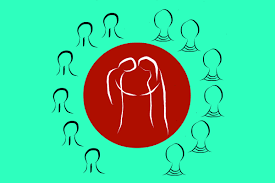
The theory of relativity says that every structure has a prior cause, which can be described as the structure that a person would have to have in order for the structure to have been established. Similarly, society is said to be grouped into several structurally-similar sets of roles, meanings, or functions, each having its own functions, meanings, and purposes. Individuals then enter the social structure based on their relational situations, which may be either constrained or elastic depending on individual beliefs, needs, desires, and even capabilities.
In order to fully grasp how social structures emerge in societies, it is necessary to look at how they relate to each other, but also how they differ, in terms of their organization.
Structures emerge in societies through the practice of many social behaviors.
These behaviors include interaction among individuals, groups, and even communities. It is through these interactions that social structures are established. However, before any behaviors can take place, there must be a set of rules, norms, and guidelines that all individuals must adhere to. In addition, there must also be a virtual data room due diligence, which is the main driving force behind any m&a process.
Stratification refers to the division of labor or roles based on levels of skill, authority, and wealth. Negotiation deals with aligning interests between those with power and those without power, so as to form a community or group with common interests. A successful negotiation strategy is one that establishes equality among those being negotiated with. Through the establishment of equality, greater social norms may be established, such as cooperation, solidarity, and sharing.
Another important process that shapes social structure changes.
This can either be a gradual process, where historical processes are brought into play over time, or a sudden and profound change due to socio-economic conditions. Usually, changes take place within political institutions, especially where new powers to gain control over political systems. However, when socio-political institutions are brought to a grinding halt, such as after the downfall of Apartheid South Africa, there may not be major structural changes within the countries involved.
However, the process of change itself has a greater impact on the maintenance of social structures than did the changes in the institutions. There are two theories in sociology that are used to explain how changes in a society’s structure affect people’s lives.
The first theory is the conflict theory.
According to this theory, conflict can lead to societal restructuring that is either stable or unstable. For example, if there are no underlying conflicts in a society, then stability can ensue.
In a society with social structures that are based on conflict, however, change can occur, and this change can either be a stable one or a very dramatic one. For instance, during the last century, there was a major movement for social change. The issues at hand were race issues, but they had a deeper issue at hand that touched upon many aspects of society.
The second theory that is used to describe social structures is stratification theory.
Stratification can either be a positive or negative event. A positive event is where people are organized according to how they produce goods and services. A negative event is when individuals are grouped based on factors such as their income level and/or social class. Both of these events can lead to drastic changes in society.
The last theory that is used to describe social structures is that of the demand and supply institutions.
The demand and supply institutions refer to how productive capital and labor are distributed in a society. If there is more than enough of something, it will be manufactured, and if there is not enough then it will not be produced. Since India has both a manufacturing base and a fairly high per capita income, it would seem like there would be plenty of labor and capital to go around, but this is not the case.
